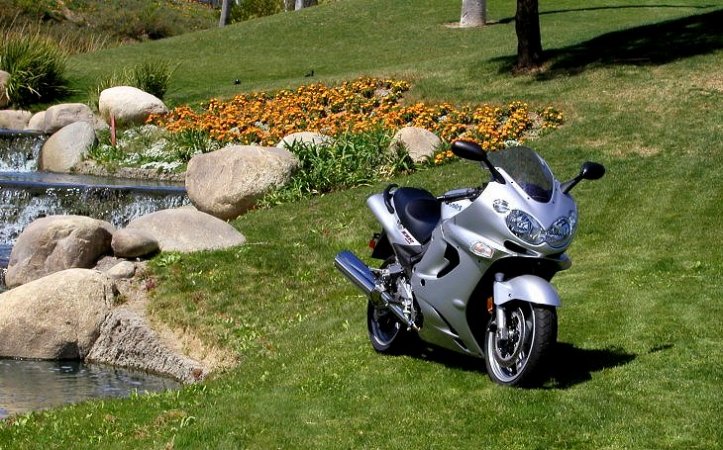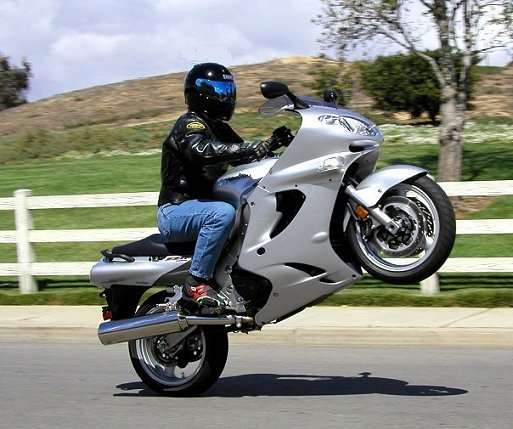
Back when Kawasaki announced the 2002 ZZ-R1200, we gave our readers a brief preview. We have now had the ZZ-R1200 long enough to put a few hundred miles on the bike, and this is a brief, initial impression before doing a more thorough review in Part Two a bit later. Part Two will also have more technical information on the ZZ-R1200.
Casual observers might dismiss the ZZ-R1200 as a warmed over ZX-11, a motorcycle with a decade old design. The ZZ-R1200 does have some components derived from the original ZX-11, although not identical to the ZX-11 components. Most notably, the twin spar aluminum frame design (which now has thicker walls for increased stiffness, as well as different steering geometry, a different subframe and a different swingarm), and the engine (which was thoroughly re-engineered and introduced in the Kawasaki ZRX1200R last year). The ZZ-R1200 is a thoroughly new design in its own right, carrying over a few design elements from one of the fastest production motorcycles ever manufactured.
The engine we loved so much in last year’s ZRX1200R (see our ride review of that motorcycle here), is further refined in the ZZ-R1200. The ZRX has a five-speed transmission, while the ZZ-R has an even more flexible six-speed transmission. A single muffler exhaust system on the ZRX is now a two muffler design on the ZZ-R, and there are additional engine changes (which will be discussed in Part Two).

Believe it or not, the ZZ-R feels substantially quicker than the ZRX. The powerband is wide and smooth, and the acceleration (particularly, above 5,000 rpm) is literally breathtaking. This is clearly the fastest “sport tourer” (an admittedly ill-defined category these days) we have ever ridden. That fact is likely to remain unchanged after the introduction of shaft-driven competitors by both Yamaha and Honda a bit later this year (the ZZ-R is chain driven), but Yamaha will undoubtedly make this a close call with the FJR1300.
Although you can’t help but notice the immensely powerful engine after just a few miles on the ZZ-R, the fluid and quick handling (which belies the size and weight of the ZZ-R) is a distinct, and delightful, impression that follows close behind. The ZZ-R has the light steering, and the ability to change directions, of a smaller, lighter machine. An MD test rider who road races two strokes at the expert level, and routinely puts more than 20,000 miles per year on his personal sport bike (currently, a Honda CBR929RR), rode the ZZ-R through the twisties and came away impressed (“very surprised”) with the handling of the ZZ-R. He noted generous ground clearance, and made the comment that the ZZ-R has “more handling potential than most sport tourers would care to try.”
Ergonomically, the ZZ-R strikes an excellent compromise between full-on sport bike and lazy tourer. More in Part Two.





